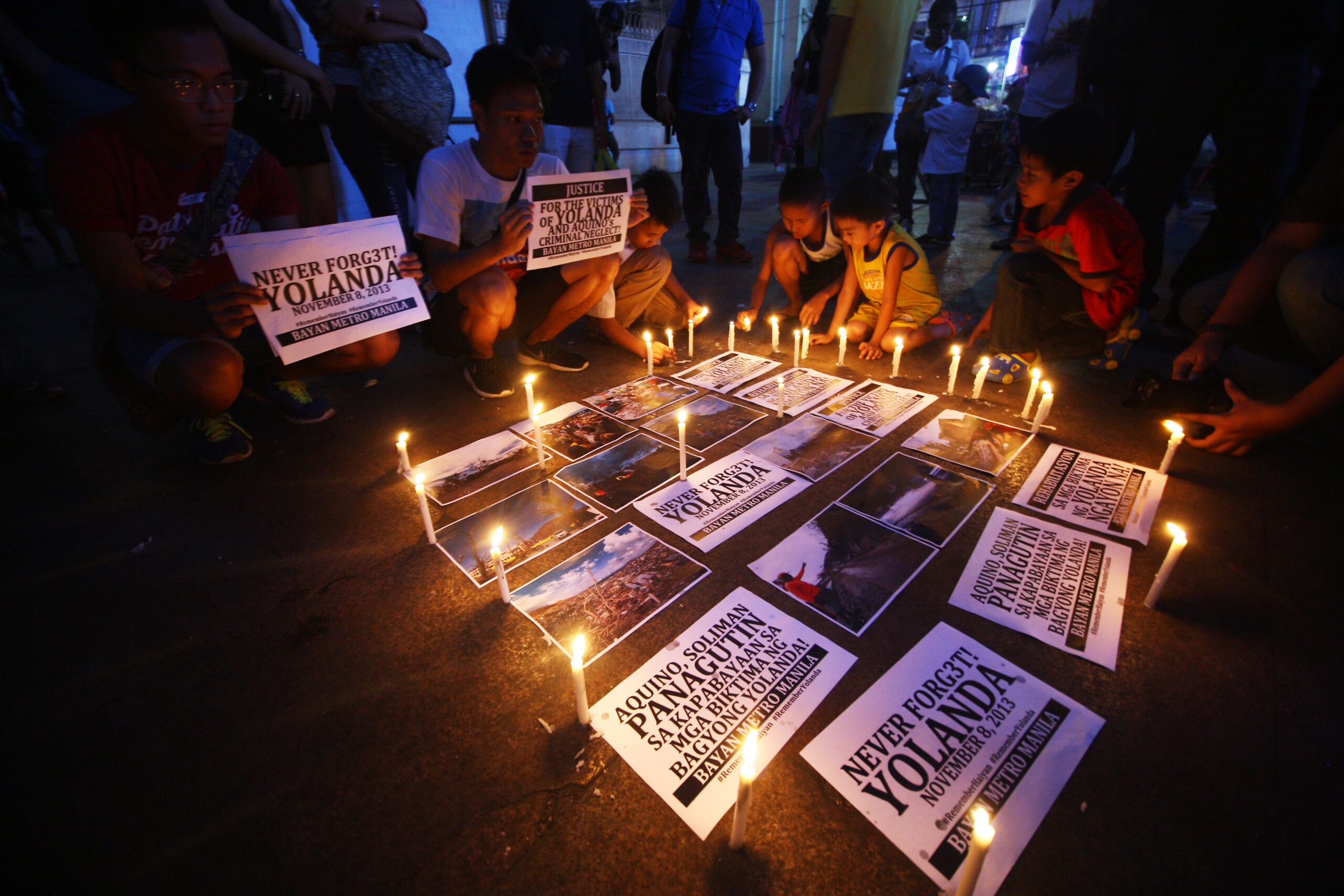SUMMARY
This is AI generated summarization, which may have errors. For context, always refer to the full article.

MANILA, Philippines – From unfinished houses to the lack of a powerful government agency on disasters, systemic issues continue to hound the Philippines 3 years after Super Typhoon Yolanda (Haiyan) struck the country on November 8, 2013.
True, the government has managed to minimize deaths in disasters that followed Yolanda.
The government and the public, for one, learned the importance of evacuating especially when state scientists forecast storm surges.
People, in the first place, now have an idea what a storm surge is, and the government has added another level in its storm warning system – Storm Signal No. 5, for typhoons with winds of more than 220 km/h, like Yolanda.
However, unresolved issues such as the following remain:
- The absence of a standalone disaster agency, not a mere council like the current National Disaster Risk Reduction and Management Council (NDRRMC)
- The slow pace of building permanent shelters for Yolanda survivors
- The unfinished tally of victims who died in the super typhoon
1. No standalone disaster agency
The first issue concerns the lack of a standalone disaster agency – a problem that could hound the Philippines’ efforts in addressing succeeding disasters.
Isagani Serrano, co-convenor of the group Social Watch Philippines, pointed out the need for a “central authority” more powerful than the NDRRMC.
“‘Yung nasa batas na NDRRMC, council ‘yon e. Ang council, nagmi-meeting, hindi nagko-command,” Serrano said in an interview with Rappler.
(The NDRRMC, which is in the law, is a council. A council conducts meetings. It does not command.)
Senator Panfilo Lacson, the Yolanda rehabilitation czar appointed by then president Benigno Aquino III, pushed for this centralized disaster agency just a few months after Yolanda struck.
Lacson said this requires a new piece of legislation, but no law on this has been passed by Congress.
Serrano said he had hoped that Lacson’s Yolanda rehabilitation office – the Office of the Presidential Assistant for Rehabilitation and Recovery – would have the powers of a centralized disaster agency.
“Akala natin ‘yun na ‘yon. E hindi pala, magko-coordinate lang pala,” he said. (We thought that was it. It turns out that it will only coordinate.)
2. Only 2% of houses finished
Another huge problem, directly connected to Yolanda, is the slow pace in building permanent shelters for Yolanda survivors.
Three years after the super typhoon, only 2% of the total needed houses have been occupied.
This is equivalent to 4,728 out of a total 205,128 needed permanent shelters for Yolanda survivors.
Vice President Leni Robredo, who chairs the Housing and Urban Development Coordinating Council, partly blamed red tape for this delay.
One problem, she said, is the tedious land titling process.
Danny Carranza, advocacy and policy lead of the Community of Yolanda Survivors and Partners, told Rappler that the government seems to be in “disarray.”
“Medyo hiwa-hiwalay ang gobyerno,” he said. (The government seems disjointed.)
Illustrating the lack of coordination between government agencies, Carranza said the National Housing Authority, for instance, would take care of building houses, but it would remain “unclear” how these families there will have access to water, electricity, and decent jobs elsewhere.
Reiterating the first issue mentioned, Carranza explained, “Ang dahilan kung bakit…parang sabog ang gobyerno, wala kasi talagang ahensya na may central na kapangyarihan para i-organize niya ang response ng gobyerno.”
(The reason why the government seems disjointed is that there is really no agency with a central authority to organize the response of the government.)
3. Death toll not yet final
At the same time, while rehabilitation continues, a basic question remains unanswered: Exactly how many people died due to Yolanda?
The final report on the effects of Yolanda, as uploaded on the NDRRMC website, lists 6,300 individuals who died due to Yolanda.
More than 93% of these deaths came from Region VIII or Eastern Visayas, which includes Tacloban City.
Edgar Posadas, director of the Office of Civil Defense (OCD) in Region VIII, said the government has not stopped counting the dead due to Yolanda.
“We continue to count,” he said in a phone interview with Rappler.
He noted that around 5,900 of the dead due to Yolanda come from Region VIII, based on the data from the OCD’s central office.
In 2015, however, the regional OCD added 22 persons to its body count. This brought their regional death toll to 5,922.
Posadas said he cannot estimate how many more casualties remain unaccounted for, and said the government faces a big challenge in counting the dead.
The first hurdle, he said, is identifying the remains. The second is checking if they indeed died due to Yolanda and not other reasons such as foul play.
He said the government follows strict rules and regulations on this, issued on May 13 this year.
Duterte: ‘I am not satisfied’
Seeing all the unfinished business 3 years after Yolanda, President Rodrigo Duterte criticized the slow pace of rehabilitation in Yolanda-hit areas.
“I am not satisfied. As a matter of fact, it’s BS to me,” Duterte said on November 8, referring to the rehabilitation process.
“Indolence is part of corruption,” he also said in a speech in Tacloban City on the third anniversary of the super typhoon, the first under the Duterte administration.
For Duterte, rehabilitation in Yolanda-hit areas should have been finished a year after the disaster.
It was crucial, he said, to “cut the red tape.”
Duterte then ordered the fast-tracking of Yolanda shelter aid.
He directed Robredo and Michael Dino, presidential assistant for the Visayas, to speed up the implementation of housing projects for Yolanda survivors.
“I want this thing completed – I will be back…In the fullness of God’s time, I will be back December,” the President said.
Duterte said, “I ask everybody to cooperate.” – Rappler.com
Add a comment
How does this make you feel?
There are no comments yet. Add your comment to start the conversation.